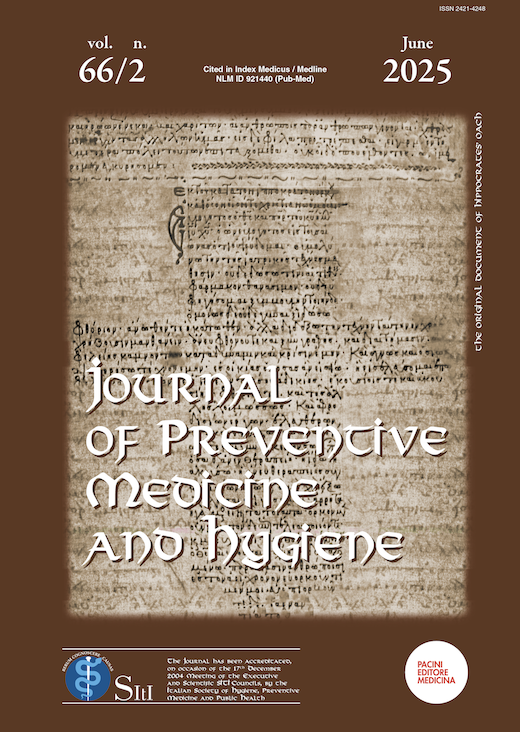Abstract
Objectives: To assess PE teachers' knowledge of physical fitness and its link to children's health and identify barriers and facilitators for its management in schools.
Methods: A total of 2,378 PE teachers (56% men) completed an online questionnaire on their knowledge, perceived barriers, and facilitators regarding physical fitness.
Results: Most of teachers reported being aware of the associations between cardiorespiratory fitness (CRF) (96%) and muscular strength (MS) (88%) with current health in youth. A smaller proportion of teachers acknowledged knowing the potential associations of these fitness components with future health in adulthood, specifically 40% for CRF and 22% for MS. The majority of teachers (80%) reported being sufficiently trained during their training courses to assess and develop the CRF. Only 50% of teachers reported feeling sufficiently trained to assess MS, while 58% reported being adequately trained to develop this component. Among the teachers, 82% reported that insufficient practice time, large class sizes, and high heterogeneity are key obstacles. Less than 50% identified other prioritized objectives as barriers, while 30% reported a lack of material resources as a significant limitation. Then, 84% of teachers reported being interested in participating in continued professional development focused on the promotion of physical fitness in youth through PE.
Conclusions: Barriers such as limited training, structural constraints, and low awareness of MS recommendations hinder effective fitness management. Addressing these through improved curricula, teacher training, and resources is crucial to enhancing youth fitness and health in France.
References
Ortega FB, Ruiz JR, Castillo MJ, Sjöström M (2008) Physical fitness in childhood and adolescence: a powerful marker of health. Int J Obes (Lond) 32:1–11. https://doi.org/10.1038/sj.ijo.0803774
García-Hermoso A, Ramírez-Vélez R, García-Alonso Y, et al (2020) Association of Cardiorespiratory Fitness Levels During Youth With Health Risk Later in Life: A Systematic Review and Meta-analysis. JAMA Pediatr 174:952. https://doi.org/10.1001/jamapediatrics.2020.2400
Henriksson P, Henriksson H, Tynelius P, et al (2019) Fitness and Body Mass Index During Adolescence and Disability Later in Life: A Cohort Study. Ann Intern Med 170:230–239. https://doi.org/10.7326/M18-1861
Henriksson H, Henriksson P, Tynelius P, et al (2020) Cardiorespiratory fitness, muscular strength, and obesity in adolescence and later chronic disability due to cardiovascular disease: a cohort study of 1 million men. Eur Heart J 41:1503–1510. https://doi.org/10.1093/eurheartj/ehz774
García-Hermoso A, Ramírez-Campillo R, Izquierdo M (2019) Is Muscular Fitness Associated with Future Health Benefits in Children and Adolescents? A Systematic Review and Meta-Analysis of Longitudinal Studies. Sports Med 49:1079–1094. https://doi.org/10.1007/s40279-019-01098-6
Smith JJ, Eather N, Morgan PJ, et al (2014) The Health Benefits of Muscular Fitness for Children and Adolescents: A Systematic Review and Meta-Analysis. Sports Med 44:1209–1223. https://doi.org/10.1007/s40279-014-0196-4
Herraiz-Adillo Á, Ahlqvist VH, Higueras-Fresnillo S, et al (2024) Physical fitness in male adolescents and atherosclerosis in middle age: a population-based cohort study. Br J Sports Med bjsports-2023-107663. https://doi.org/10.1136/bjsports-2023-107663
Henriksson H, Henriksson P, Tynelius P, Ortega FB (2019) Muscular weakness in adolescence is associated with disability 30 years later: a population-based cohort study of 1.2 million men. Br J Sports Med 53:1221–1230. https://doi.org/10.1136/bjsports-2017-098723
Ortega FB, Silventoinen K, Tynelius P, Rasmussen F (2012) Muscular strength in male adolescents and premature death: cohort study of one million participants. BMJ 345:e7279. https://doi.org/10.1136/bmj.e7279
Vanhelst J, Lang JJ, Matelot D, et al (2024) Cardiorespiratory fitness has declined among French children since 1999, although the decline appears to be getting smaller. Scandinavian Med Sci Sports 34:e14641. https://doi.org/10.1111/sms.14641
Vanhelst J, Lang JJ, Matelot D, et al (2024) Temporal trends in muscular fitness among French children and adolescents between 1999 and 2023. J Sports Sci 1–9. https://doi.org/10.1080/02640414.2024.2440676
Wu J, Yang Y, Yu H, et al (2023) Comparative effectiveness of school-based exercise interventions on physical fitness in children and adolescents: a systematic review and network meta-analysis. Front Public Health 11:1194779. https://doi.org/10.3389/fpubh.2023.1194779
Cox A, Fairclough SJ, Kosteli M-C, Noonan RJ (2020) Efficacy of School-Based Interventions for Improving Muscular Fitness Outcomes in Adolescent Boys: A Systematic Review and Meta-analysis. Sports Med 50:543–560. https://doi.org/10.1007/s40279-019-01215-5
Santiago JA, Morrow JR (2021) A Study of Preservice Physical Education Teachers’ Content Knowledge of Health-Related Fitness. Journal of Teaching in Physical Education 40:118–125. https://doi.org/10.1123/jtpe.2019-0138
Nathan N, Elton B, Babic M, et al (2018) Barriers and facilitators to the implementation of physical activity policies in schools: A systematic review. Prev Med 107:45–53. https://doi.org/10.1016/j.ypmed.2017.11.012
Cox A, Noonan RJ, Fairclough SJ (2023) PE teachers’ perceived expertise and professional development requirements in the delivery of muscular fitness activity: PE Teacher EmPOWERment Survey. European Physical Education Review 29:251–267. https://doi.org/10.1177/1356336X221134067
https://www.devenirenseignant.gouv.fr/etre-professeur-d-education-physique-et-sportive-145, visited on 26th December 2024
Frühauf A, Hundhausen F, Kopp M (2022) Better Together? Analyzing Experiences from Male and Female Students and Teachers from Single-Sex and Coeducational Physical Education Classes. Behavioral Sciences 12:306. https://doi.org/10.3390/bs12090306
Castejón FJ, Giménez FJ (2015) Teachers’ perceptions of physical education content and influences on gender differences. Motriz: rev educ fis 21:375–385. https://doi.org/10.1590/S1980-65742015000400006
Mateo-Orcajada A, Abenza-Cano L, Vaquero-Cristóbal R, et al (2021) Gender Stereotypes among Teachers and Trainers Working with Adolescents. International Journal of Environmental Research and Public Health 18:12964. https://doi.org/10.3390/ijerph182412964
Anderson E, White A Sport, Theory and Social Problems | A Critical Introduction | Eric And. https://www.taylorfrancis.com/books/mono/10.4324/9780203857434/sport-theory-social-problems-eric-anderson-adam-white. Accessed 7 Jan 2025
Preece S, Bullingham R Gender stereotypes: the impact upon perceived roles and practice of in-service teachers in physical education: Sport, Education and Society: Vol 27, No 3. https://www.tandfonline.com/doi/abs/10.1080/13573322.2020.1848813. Accessed 7 Jan 2025
Pilar P-M, Rafael M-C, Félix Z-O, Gabriel G-V (2019) Impact of Sports Mass Media on the Behavior and Health of Society. A Systematic Review. Int J Environ Res Public Health 16:486. https://doi.org/10.3390/ijerph16030486
Wiyono BB (2016) COMPARATION OF TEACHERS’ WORK MOTIVATION BASED ON GENDER, AGE, EDUCATION LEVEL, WORK DURATION, RANK, AND SCHOOL LEVEL. 3:
Ortega FB, Leskošek B, Blagus R, et al (2023) European fitness landscape for children and adolescents: updated reference values, fitness maps and country rankings based on nearly 8 million test results from 34 countries gathered by the FitBack network. Br J Sports Med bjsports-2022-106176. https://doi.org/10.1136/bjsports-2022-106176
Cox A, Noonan RJ, Fairclough SJ (2022) The Feasibility and Acceptability of an Online CPD Programme to Enhance PE Teachers’ Knowledge of Muscular Fitness Activity. IJERPH 19:12132. https://doi.org/10.3390/ijerph191912132

